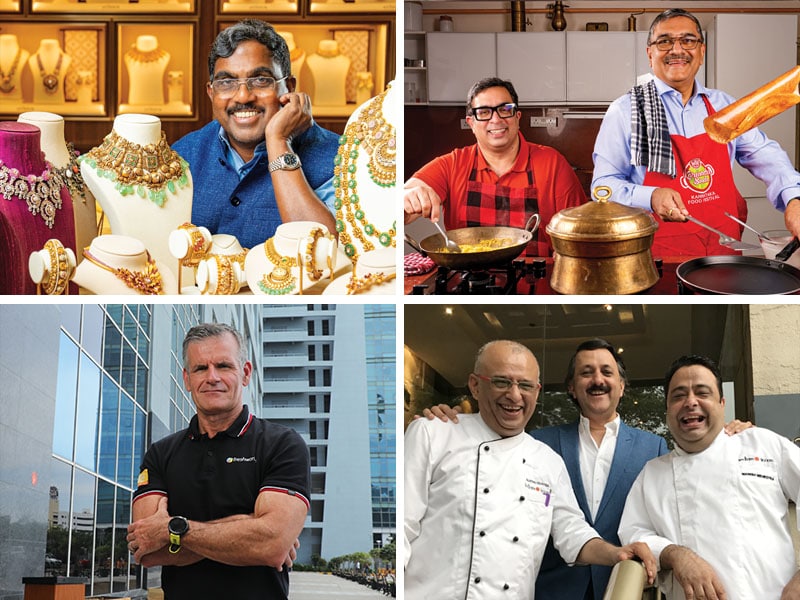

Today, Malabar Gold and Diamonds, with an annual revenue of over ₹51,000 crore in FY24, is India’s largest jeweller by revenue. The jewellery behemoth operates 213 showrooms in India, and 140 across the globe. Rivals Joy Alukkas and Kalyan Jewellers lag far behind at 160 and 190 stores, highlighting the pace at which Malabar Gold has been growing in recent years. Only Tanishq has more stores—464. But have you ever wondered how the company got its name? MP Ahammed, its chairman, has an interesting anecdote to share, and a lot more on the company’s journey.

MTR, the company that invented the ubiquitous rava idli and Chandrahara, a favourite sweetmeat of Kannadigas, is synonymous with Karnataka. For Kannadigas, MTR is an emotion, not just a brand. Therefore, Sanjay Sharma, the chief executive officer of Orkla India, the company that bought MTR, knew he had a big challenge ahead of him. After all, he was at the helm of a quintessential regional brand that prided itself in its rich cultural lineage and DNA. But good news is, MTR has managed to stay true to its core—a Kannadiga brand rooted in local culture, cuisine and revenue. Here’s how Sharma and chief marketing officer Sunay Bhasin have managed to keep it going.

Three months ago, when Dennis Woodside became CEO and president of Freshworks, while founder Girish Mathrubootham assumed the role of the chairman focusing on product strategy, investors didn’t immediately like the transition. Woodside is now tasked with taking the business to its first big milestone as a listed company—a billion dollars in annual revenue by 2026—and then building on that foundation. At this point, however, Wall Street analysts seem to like its prospects, on the basis of its performance on Nasdaq. So, is a Woodside-Mathrubootham combination the right one? Time will tell. Read more about it here
Discover:

In the last of a three-part interview series, Prashant Jain, CIO and fund manager, 3P Investment Managers, is joined by his co-fund manager Ashwani Kumar, to discuss their portfolio strategy and decode how the fund outperformed markets since its inception last year.
Jain and Kumar, who have navigated volatile market cycles over 33 years, are overweight on banks even as most lenders continue to report deposit and margin challenges. In fact, as of June 28, the fund’s total exposure to five bank stocks comprises the highest allocation, of 31.4 percent, in the portfolio. Here’s the market maven’s sectoral outlook and portfolio strategy for long-term market-beating returns.

In this episode, Kaushik Mudda talks about how he and his friend Navin Jain turned a problem into an opportunity with their award-winning five-axis CNC machine to build a manufacturing services venture from Bengaluru–Ethereal Machines. Today, backed by Blume Ventures, Peak XV Partners and Steadview Capital, the 10-year-old startup is pioneering what the entrepreneur duo calls machining-as-a-service in India. Ethereal is evolving as a promising deep tech company. Tune in here.

In this episode of Beyond the Boardroom, the vice chairman of the RP-Sanjiv Goenka Group, Shashwat Goenka, talks about family dynamics in a legacy business, what happens when he disagrees with his father, and his passion to cook. Besides insights on what makes Marwari families excel in business, he also talks about business wisdom that has been passed on through the generations, from his grandfather to his father and then to him, and more. Tune into the series showcasing entrepreneurs, sportspersons & celebrities in a different—real—avatar. What are they like beyond the million-dollar deals, off the field, and when the camera is not rolling, only on Forbes India Beyond the Boardroom. Watch here.

Indian Accent has been known for inventive Indian food that matches the globalised aspirations of millennials with money. While the presentation has been quirky and tongue-in-cheek, and the recipes boast luxury imported ingredients, the elevated preparations were still cooked with nuance and regional flavours combined flawlessly, thanks to Manish Mehrotra’s palate and talent both rooted firmly in a very Indian milieu. As chef Mehrotra quits the brand that turned him into a celebrity, his food into the new Indian cuisine that everyone enjoys equally, and which paved the way for a new generation of Indian chefs trying to reinvent regional Indian foods, an era has truly passed. It’s a watershed moment for Indian gastronomy.
Read more about India’s most path-breaking chef, the father of ‘modern Indian’ gastronomy here.
